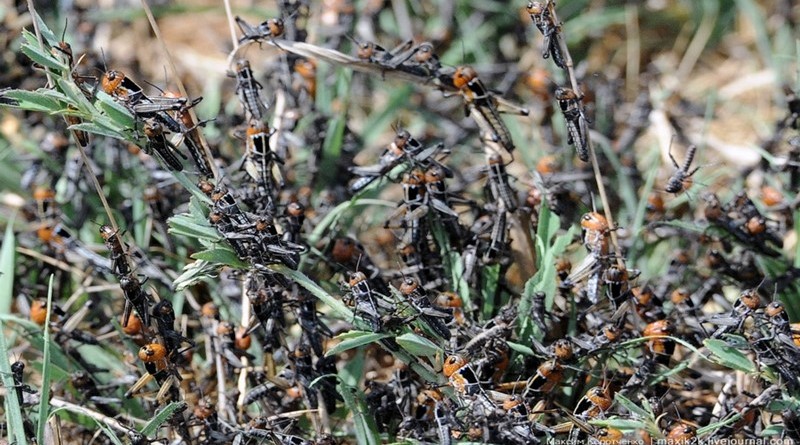FAO sounds alarm on Desert Locust outbreak in northeast Africa and Saudi Arabia triggered by heavy rains
Heavy rains and cyclones have triggered a recent surge in Desert Locust populations, causing an outbreak to develop in Sudan and Eritrea that is rapidly spreading along both sides of the Red Sea to Saudi Arabia and Egypt, FAO warned today.
The UN agency called on all the affected countries to step up vigilance and control measures to contain the destructive infestations and protect crops from the world’s most dangerous migratory pest.
Moving fast
Good rains along the Red Sea coastal plains in Eritrea and Sudan have allowed two generations of breeding since October, leading to a substantial increase in locust populations and the formation of highly mobile swarms. At least one swarm crossed the Red Sea to the northern coast of Saudi Arabia in mid-January, followed by additional migrations about one week later. Groups of mature winged adults and a few swarms also moved north along the coast to southeast Egypt at the end of the month.
In the interior of Saudi Arabia, two generations of breeding also occurred in the southeastern Empty Quarter region near the Yemen-Oman border after unusually good rains from cyclones Mekunu and Luban in May and October 2018 respectively. A few of these swarms have already reached the United Arab Emirates (UAE) and southern Iran with a potential risk of spreading further towards the India-Pakistan border.
Stepping up efforts
Aerial spraying operations were mounted in Sudan and Saudi Arabia supplemented by ground control measures in both countries, as well as in Eritrea and Egypt, treating more than 80,000 ha since December.
“The next three months will be critical to bring the locust situation under control before the summer breeding starts,” said Keith Cressman, FAO’s Senior Locust Forecasting Officer. “The further spread of the current outbreak depends on two major factors – effective control and monitoring measures in locust breeding areas of Sudan, Eritrea and Saudi Arabia and the surrounding countries, and rainfall intensity between March and May along both sides of the Red Sea and in the interior of the Arabian Peninsula.”
FAO is convening a meeting next week in Jordan (17- 21 February) with affected countries to review the current situation with the aim of intensifying survey and control operations.Â
February forecast
Breeding will continue in February on the Red Sea coast in Sudan and Eritrea, causing a further increase in hopper and adult groups, hopper bands and adult swarms. As vegetation dries out, adult groups and a few swarms are likely to move north along the Red Sea coast in Eritrea to Sudan, and from the Red Sea coast of Sudan to the Nile Valley in northern Sudan. There is a moderate risk that some swarms will continue crossing the Red Sea to the coastal and interior areas of Saudi Arabia.
Major threat to crop production
Desert Locusts are short-horned grasshoppers that can form large swarms and pose a major threat to agricultural production, livelihoods, food security and the environment and economic development.
Adult locust swarms can fly up to 150 km a day with the wind. Female locusts can lay 300 eggs within their lifetime while an adult insect can consume roughly its own weight in fresh food per day – about two grams every day. A very small swarm eats the same amount of food in one day as about 35,000 people and the devastating impact locusts can have on crops poses a major threat to food security, especially in already vulnerable areas.
FAO’s work on preventing locust plagues
The Desert Locust Information Service (DLIS) at FAO Headquarters in Rome has been operating a global monitoring and early warning system since the 1970s as part of the preventive control strategy. More than two dozen frontline countries in Africa, the Near East and southwest Asia contribute to this system by undertaking regular surveys in the desert to look for green vegetation and Desert Locust.
The field teams use an innovative tool developed by FAO called eLocust3, which is a handheld tablet for recording observations and sending data in real time via satellite to the national locust centres and to DLIS. This information is regularly analysed together with weather and habitat data and satellite imagery in order to assess the current locust situation, provide forecasts up to six weeks in advance, and issue warnings and alerts when necessary.
More information about the current situation and eLocust3 are available on Locust Watch.



